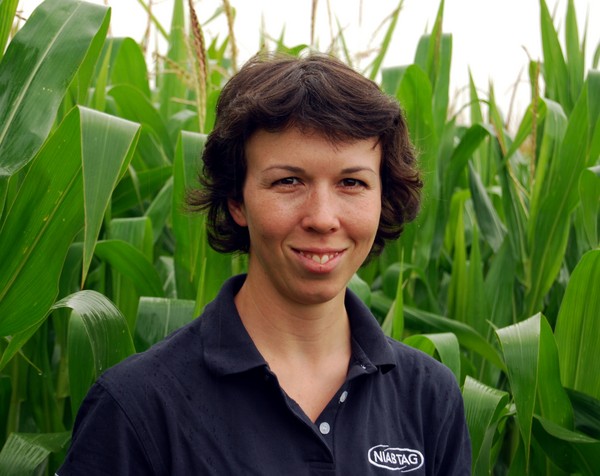Eleven new first-choice varieties have been added to the BSPB 2014 Forage Maize Descriptive List.
The varieties Glory and Fieldstar from Limagrain; Ramirez and Severus from KWS; Truxx and Mixxture from RAGT; MAS 11.F from Maisadour Semences; and Aritzo from DLF have been added to the Favourable Descriptive List (DL).
Seven of those eight varieties have also been added to the Less Favourable DL alongside Keen from KWS, MAS 09.A from Maisadour Semences and RAGT’s Zarlixx, providing growers in more marginal maize growing conditions with a wider variety choice.
NIAB TAG’s forage crop specialist Dr Joanna Matthews advises that, when considering variety choice, a combination of quality traits is always desirable, and that metabolisable energy (ME) and starch levels should not be thought of in isolation. “ME calculation is, in part, derived from the digestibility of plant material and it is this relationship between quality and accessibility which is key to optimal ruminant utilisation.”
The List’s indicator of accessibility is described by the cell wall digestibility (CWD) percentage, which is an indication of the stover (leaves and stem) quality. The expected range is 50-60%; the higher the percentage the better the potential for whole plant utilisation and increased animal dry matter intake.
Assessing the new varieties Dr Matthews considers Raminez, Aritzo and Truxx valuable additions to the Favourable DL, with good ME levels, ranging from 11.54-11.70 MJ/kg combined with high CWD percentages from 59.1-59.4%. On less favourable sites Keen and MAS 09.A offer the opportunity for quality accessible forage, with ME levels at 11.48 and 11.46MJ/kg respectively and CWD percentages of 57.1% and 58.2%.
“Glory has an average cell wall digestibility (CWD) score but its other characteristics are hard to ignore, including a high yield potential of 17.8 and 17.3 t DM/ha on the favourable and less favourable sites combined with very good ME and starch levels,” says Dr Matthews.
For growers looking for all-round performers, combining yield, ME and starch, then Severus and Mixxture, with starch levels of 34.7 and 34.2% respectively, have the capacity to provide a valuable ensilaged starch reserve.
On less favourable sites a valuable characteristic to look for in any forage maize variety is early vigour; the ability to develop rapidly in the establishment phrase. “Glory and Fieldstar show good early vigour scores and have a high yield potential at 17.3 and 17.7 t DM/ha respectively,” advises Dr Matthews.
Forage performance in terms of livestock output, whether milk or meat production, is critical to livestock enterprises and the Forage Maize Descriptive List has an important role in this process advises BSPB’s Jeremy Widdowson.
“The use of data from multiple years and sites across the UK provides a reliable indication of variety performance under a range of conditions. This means that the DL offers growers the ability to select varieties best suited to their locality, whilst the range of varieties and varietal attributes displayed within the Lists allow the grower to select on their individual requirements, such as maximising yield potential, optimising forage quality or a balance of traits,” says Mr Widdowson.
The BSPB 2014 Forage Maize Descriptive Lists are available to download immediately from the BSPB website and the NIAB website.
Ends
- BSPB is the representative organisation for plant breeders in the UK.
- The BSPB Forage Maize Crop Group organises independent Descriptive List testing for forage maize varieties.
- Forage maize varieties are tested independently for three years (six locations in Year 1 and 2 and nine locations in Year 3) before addition to the Descriptive List. The trial work is carried out by NIAB TAG and plant breeders under contract to the BSPB.
- Trials are grown to standard protocols which are reviewed annually to ensure that they are relevant to the industry. All trials are independently inspected to ensure compliance with protocol and high standards of trialling and the data are independently verified and analysed by NIAB.

